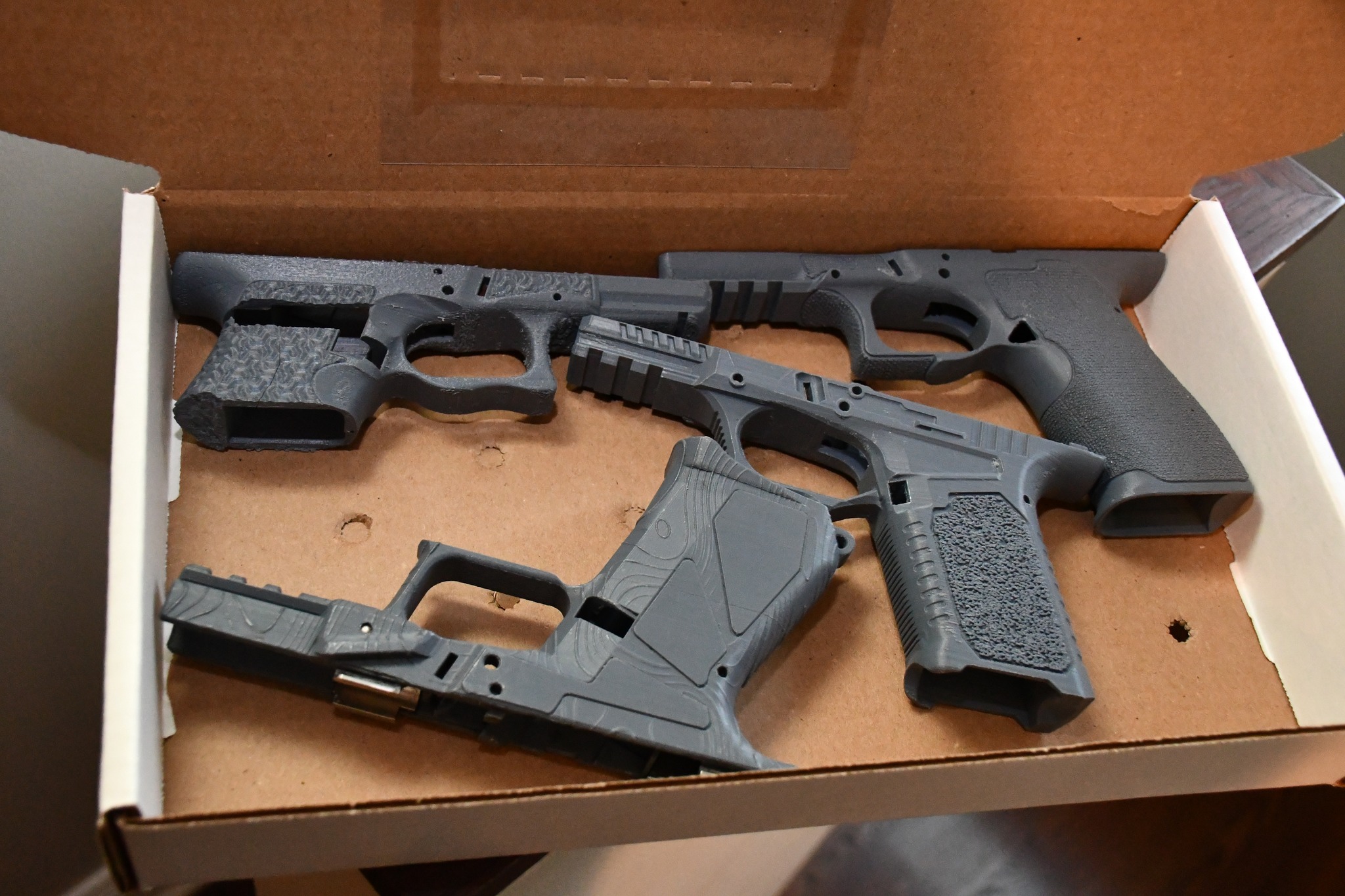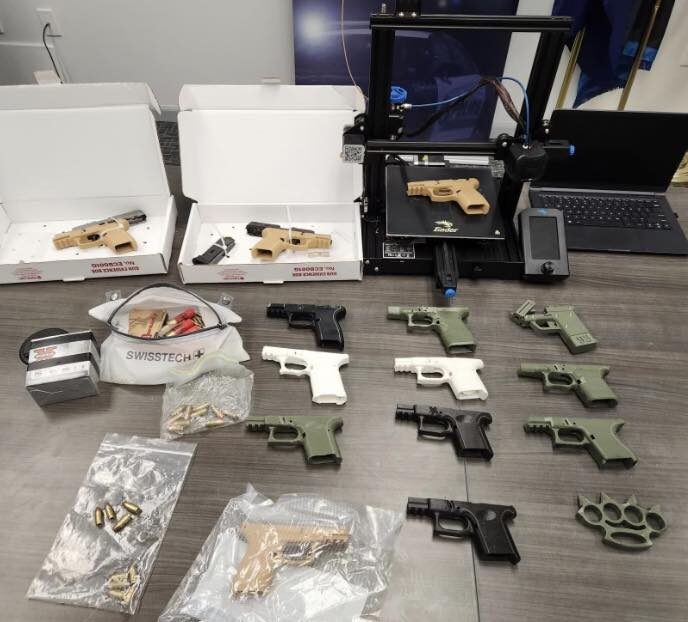3D printed firearms present a unique challenge worldwide, where technology intersects with legal nuances. In the United States specifically, no federal law prohibits the making or possession of 3D printed guns; these homemade weapons, often known as “privately made firearms,” are generally legal for personal use, provided they meet certain requirements. However, 14 states have taken initiatives to regulate these 3D weapons.
Federal Perspective
At the federal level, the regulation of 3D printed guns remains somewhat vague. Although no specific federal law targets these firearms, they must adhere to the broader framework of the Gun Control Act, which requires that all firearms be detectable by security screening equipment. Additionally, the Bureau of Alcohol, Tobacco, Firearms and Explosives (ATF) has set guidelines under the “Frame or Receiver” rule for manufacturing firearms, including the need for a serial number if the gun will be sold or distributed. This essentially brings 3D printed guns under the same regulations as other firearms. The Undetectable Firearms Act, passed in 1988, further complicates the landscape by criminalizing the manufacture and possession of firearms that standard security devices cannot detect.
State-Level Initiatives
The lack of comprehensive federal legislation has led various states to take the reins to regulate 3D printed guns. States have approached this issue in different ways. As we can see in the map above, California, New Jersey, Massachusetts, and Rhode Island have taken some of the strictest stances against 3D printed firearms. In California, laws mandate obtaining a unique serial number for any manufactured or assembled firearm and prohibit any firearm undetectable by metal detectors, including 3D printed guns.
Specifically, California’s Assembly Bill 2156 enacted in 2022 states that “A person, firm, or corporation shall not use a three-dimensional printer to manufacture any firearm, including a frame or receiver, or any firearm precursor part, unless that person, firm, or corporation is licensed (…) As used in this section, ‘three-dimensional printer’ means a computer-aided manufacturing device capable of producing a three-dimensional object from a three-dimensional digital model through an additive manufacturing process that involves the layering of two-dimensional cross sections formed of a resin or similar material that are fused together to form a three-dimensional object.”
New Jersey’s approach is similarly robust, focusing on materials by outlawing the creation, distribution, or possession of firearms predominantly made from plastic—directly targeting 3D printed guns. Massachusetts also prohibits the manufacturing, distributing, possessing, or selling any firearm or ammunition undetectable by metal detectors or X-ray machines. At the same time, Rhode Island has enacted laws requiring serial numbers and background checks for parts, effectively banning the 3D printing of guns.
 Westchester County Police seize 3D printer and 3D printed gun parts August 15, 2023. Image courtesy of Westchester County Police.
Westchester County Police seize 3D printer and 3D printed gun parts August 15, 2023. Image courtesy of Westchester County Police.Legislation Maze
Meanwhile, Washington, Colorado, and Oregon have passed laws explicitly targeting untraceable firearms, including those produced using 3D printing technology. Washington’s law makes manufacturing, possessing, or distributing untraceable firearms illegal. Also, in 2023, Oregon enacted a ban on undetectable and untraceable firearms, including 3D printed guns, requiring all firearms, frames, and receivers to be serialized.
Before Colorado enacted a 2023 law prohibiting untraceable guns and regulating the components used in their creation, the Denver City Council implemented amendments to the city’s weapons code. This local regulation mandated that manufacturers embed a serial number on the frame or receiver of “easy-to-build” firearm kits. It also required federally licensed firearms dealers to add a serial number to firearms produced through 3D printing.
Hawaii, Illinois, Maryland, and Nevada have each implemented unique measures. Hawaii regulates the manufacture, sale, and possession of ghost guns, including specific provisions against 3D printed firearms. According to law HB 2744 enacted in 2020, the state restricts the sale of ghost gun kits and parts. This legislation made it a Class C felony to purchase, manufacture, or otherwise obtain firearm parts for the purpose of assembling a firearm that has no serial number. This directly impacts the production and possession of 3D printed firearms, which often lack serial numbers.
For example, under law HB 2744, enacted in 2020, Hawaii restricts the sale of ghost gun kits and parts: “If the firearm has been assembled from parts created using a three-dimensional printer, the entity that registered the firearm receiver shall be recorded in the space provided for the name of the manufacturer and importer, and the phrase ‘3-D printer’ shall be recorded in the space provided for model (…) On firearms assembled from parts created using a three-dimensional printer, the serial number shall be engraved on stainless steel and permanently embedded to the firearm receiver during fabrication or construction.”
Illinois’s 2022 ghost gun reform bill makes it unlawful to sell or transfer unserialized firearms or unserialized unfinished frames or receivers. Also, Nevada legislation focuses on unassembled weapons sold in kits or made with 3D printers that are not classified as weapons in their unfinished state. Another case is Maryland’s law, which targets unserialized homemade firearms, including 3D printed guns, thanks to its “Public Safety – Untreacable Firearms Bills” HB425 and SB387.
About New York
New York State has been at the forefront of regulating 3D printed firearms. In 2019, the New York Senate passed a bill banning undetectable guns. Governor Andrew Cuomo further strengthened gun safety measures by signing into law a bill that bans the manufacture and sale of 3D printed guns, making it a criminal offense to produce, sell, transport, or possess these firearms. This legislation addresses the growing concern over ghost guns that can pass through metal detectors unnoticed, thereby posing a significant security risk.
Then, in 2023, Senator Gillibrand of New York introduced the 3D Printed Gun Safety Act in July 2023 at the federal level. This proposed law prohibits the online distribution of blueprints for 3D printed firearms.
Further reinforcing these efforts, in October 2023, bill A8132 was introduced in the New York state assembly by State Assemblyperson Jenifer Rajkumar. This bill requires criminal background checks for anyone purchasing a 3D printer capable of printing firearms or their components, such as auto sears that can convert semi-automatic weapons into fully automatic ones, receivers, and other gun parts.
 New York man was creating ghost guns with a 3D Printer. Image courtesy of Port Jervis Police Department via Facebook.
New York man was creating ghost guns with a 3D Printer. Image courtesy of Port Jervis Police Department via Facebook.Although Pennsylvania is not one of the states to have introduced state legislation on ghost guns, Philadelphia has taken a significant and independent step in regulating 3D printed firearms. The city’s council unanimously voted to ban 3D printing guns, making it the first U.S. city to outlaw this method of gun production. In addition, an ordinance passed in October 2020 restricts not only the production but also the possession of 3D printed guns and firearm-finishing devices.
Challenges and Debates
The issues surrounding 3D printed guns often overlap with concerns about ghost guns, unserialized firearms that evade standard background checks. This intersection significantly raises public safety concerns, as manufacturers can produce these firearms without oversight, making them difficult to trace. The debate over how to regulate these guns is ongoing, with arguments and legislative proposals emerging at both state and federal levels.
As seen in the map above, in addition to the states with specific 3D printed gun laws, there are states like Nebraska and Minnesota that, while not having laws specifically mentioning 3D printed guns, do have regulations targeting ghost guns. This mixed approach across different states highlights the complexity of gun legislation in the country. While some states target the specific issue of 3D printed guns, others address the broader category of ghost guns, encompassing a wider range of untraceable firearms. These differences may reflect distinct legislative priorities, societal needs, or political climates within each state.
Understanding the Puzzle
Given the rapidly evolving nature of this legal area, recent developments in laws and notable legal cases are crucial to understanding the current state of 3D printed gun regulations. According to an ATF report published in 2023, law enforcement agencies recovered and submitted nearly 38,000 suspected ghost guns between 2017 and 2021. In 2021 alone, 19,273 suspected ghost guns were recovered and traced, up from 8,504 in 2020. The report also reveals that 54% of guns recovered from crime scenes in 2021 had been purchased within the previous three years, up from 42% in 2019, an overall increase of 28% in the share of guns traced with such purchasing histories.
3DPrint.com‘s data has shed light on 3D printed guns specifically. Today, the presence of 3D printed guns in arrest statistics is growing, with 108 in the first half of 2023 alone. The surge in arrests paints a picture of how 3D printed firearms have shifted from a minor concern to a more noticeable phenomenon in crime statistics. The over 100-fold increase in a decade underscores the accelerating interest that criminals and gangs have developed in these weapons.
The regulation of 3D printed guns in the United States is a complex and evolving issue, with different rules in each state and a big discussion happening nationally. In this context, the Second Amendment, which allows people to own and carry guns, becomes important. The interpretation of this rule often influences the direction of gun legislation and public debate. As discussions about 3D printed firearms and ghost guns continue, finding a balance between this constitutional right and public safety remains a central aspect of the national conversation, which boils down to respecting people’s rights while dealing with new safety issues that come with fast-changing technology.
Subscribe to Our Email Newsletter
Stay up-to-date on all the latest news from the 3D printing industry and receive information and offers from third party vendors.
Print Services
Upload your 3D Models and get them printed quickly and efficiently.
You May Also Like
3D Printing News Briefs, July 2, 2025: Copper Alloys, Defense Manufacturing, & More
We’re starting off with metals in today’s 3D Printing News Briefs, as Farsoon has unveiled a large-scale AM solution for copper alloys, and Meltio used its wire-laser metal solution to...
3DPOD 260: John Hart on VulcanForms, MIT, Desktop Metal and More
John Hart is a Professor at MIT; he´s also the director of the Laboratory for Manufacturing and Productivity as well as the director of the Center for Advanced Production Technologies....
3D Printing News Briefs, June 28, 2025: Defense Accelerator, Surgical Models, & More
In this weekend’s 3D Printing News Briefs, 3YOURMIND was selected to join an EU Defense Accelerator, and PTC has announced model-based definition (MBD) capabilities within Onshape. Finally, a study out...
EOS in India: AM’s Rising Star
EOS is doubling down on India. With a growing base of aerospace startups, new government policies, and a massive engineering workforce, India is quickly becoming one of the most important...

































